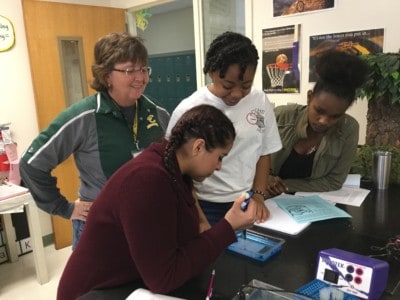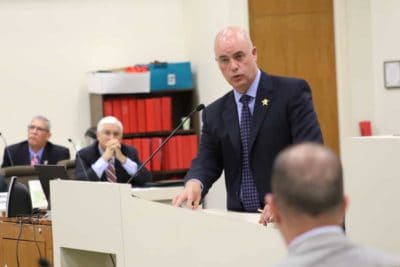

One of our favorite sayings at the NC Rural Center is, “When you’ve seen one rural county … well, you’ve seen one rural county.”
That is why in April of 2017 we launched our “Rural Road Trip,” an effort to spend intentional time in all 80 of our state’s rural counties—to better understand the nuance and diversity that exists across the rural parts of our state. Who we have found are hopeful, optimistic leaders with a sober realism about the opportunities and challenges facing them.
At each stop along our road trip, we have asked two simple questions: What are the good things happening in your community? And what keeps you awake at night?
We have heard a lot about education in the responses to those questions and the unique issues rural places face in closing the educational attainment gap in their local communities.
Here are some examples:
- In some of our most remote and sparsely populated rural counties, rural school districts face extended busing times, meaning a child’s trip to school can be upwards of two hours—each way. These commuting times mean more time away from home and school for populations that desperately need additional learning time.
-
For many rural communities, the early college model is a lifeline for first-generation college students, an opportunity for exposure to postsecondary education that might never happen without a partnership between local school districts and rural community colleges. It is needed; in 43 of our 80 rural counties, less than 50 percent of adults have education beyond high school.
But those well-functioning and highly effective partnerships face challenges as well. We have frequently heard about the struggle to align academic schedules between K-12 systems and postsecondary institutions so as not to disrupt the learning schedule for these dual-enrollment students.
-
And, of course, there is always broadband. Not too long ago, I received a letter in the mail from a rural mother, written while she was sitting in a fast-food restaurant late at night with her school-aged daughter. The setting had become a standard routine for their family, traveling away from their home so the daughter could find internet access to complete her daily homework.
If the single greatest rural development program was rural electrification in the 1930s and 40s, accessible, affordable, and truly high-speed broadband is its modern equivalent. We showed commitment and resolve then, and we need it now.
North Carolina, as a state, has made great progress to connect our rural schools to high-speed internet so that rural students are exposed to the same opportunities as their urban and suburban counterparts. However, without the “last-mile” of broadband connectivity and the critical connection to the rural home, that digital device now in every child’s hand becomes silenced at the end of the school day.
What our rural communities want from our state and federal leaders are partnerships and a dedication to removing roadblocks instead of erecting new ones. One-size-fits-all policy solutions don’t work in economic development, and they won’t work for our state’s educational attainment plan either. Rural North Carolina is unique. Let’s take the time to listen to our communities and find solutions that work, wherever home might be. For any of North Carolina to thrive, all of North Carolina must be thriving.
Share your thoughts with us on Twitter to keep the conversation going!
Editor’s note: This article was originally published by the Hunt Institute. It has been posted with the author’s permission.





